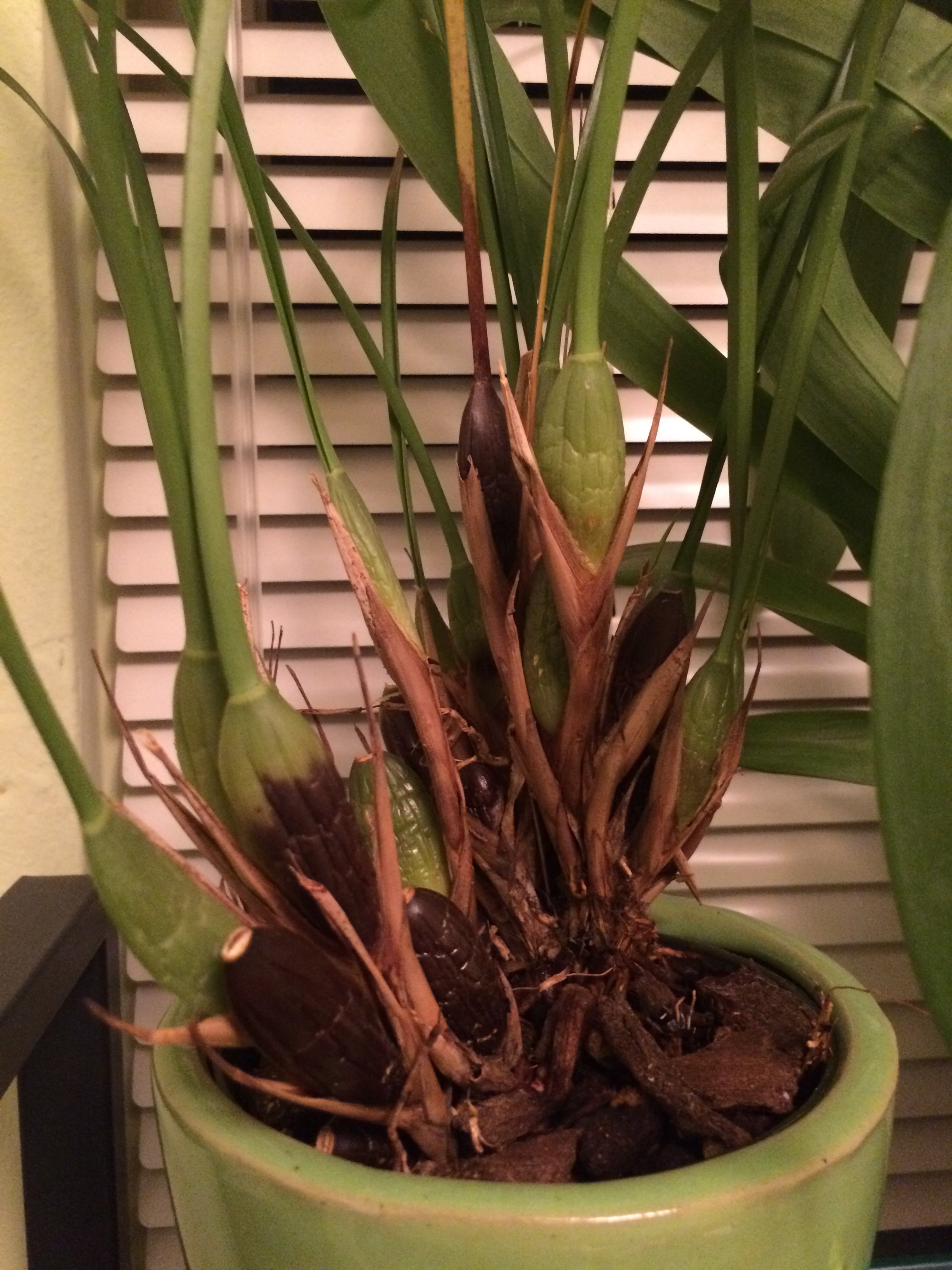Black Rot
Black rot is caused by one or both, fungi Pythium and Phytophthora spp. They both feed on the root system, which causes stunted growth and death. They are both easily transmitted from plant to plant; it spreads by water irrigation, gardening tools, and human activity. Root rot disease is favoured by growing conditions that are too wet, such as when the growing medium does not drain quickly or when weather doesn’t allow rapid drying.
Symptoms
This disease is very contagious and is primarily a root disease, but symptoms may be above the ground. Infected orchids generally show brown to black coloured canes starting from rhizome.

Image: Black rot on Maxillaria
Treatment
Treating orchid diseases at the roots requires removal of the plant from its medium and using a sterile cutting tool to cut off infected leaves, roots and leaves. Then use a fungicide to drench the roots for 15 to 20 minutes and clean the growing area with Hydrogen Peroxide diluted with water at a 1:10 ratio.
Following Fungicides are effective:
Once the plants are repotted, water the plants only if required. Keeping the plants drier will help to keep the infection from spreading or appearing again. Isolate the plants and observe the plants for 1-2 weeks. And apply another round of control spray with any of the above fungicides. Spray the plants early morning and keep the plants dry after the spraying. Don't water the plants same-day on which the spray treatment is done.
Prevention
- Avoid Over-watering
- Provide good air circulation
- Frequent Inspection of plants
- Isolation of suspicious plants
- Precautionary control sprays


